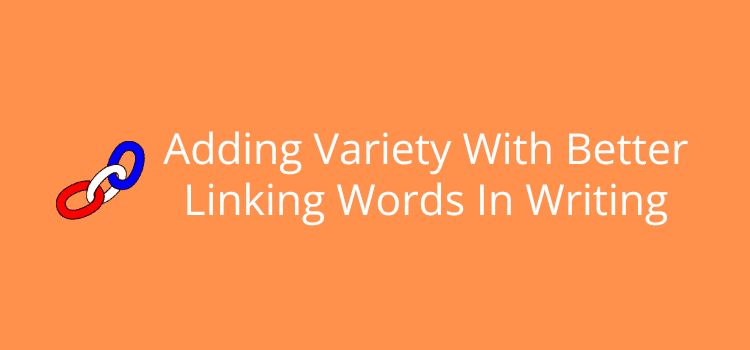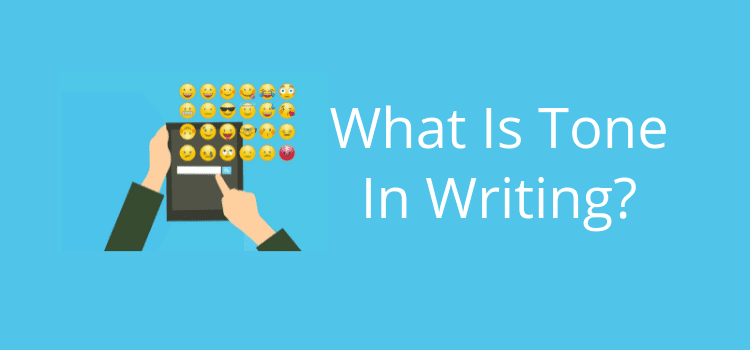
Using the same linking words in writing over and over will make for a boring read, as will any form of repetition.
It’s almost a reflex to reach for but, so, or, and when you’re writing quickly. Yet, it doesn’t have to be that way.
Like any part of your writing, variety is essential for linking and transition words. Fortunately, you have plenty of alternatives you can use.
Although swapping or replacing words may seem easy, you still need to consider context and the level of formality.
The 7 main categories of linking words
Linking words in writing serve many purposes, but they can be grouped into seven main categories.
Additive words show addition or continuation. Words like and, also, furthermore, moreover, as well as, in addition, and not only…but also help connect ideas together.
Contrast words signal difference or opposition. Examples include but, however, although, yet, on the other hand, nevertheless, nonetheless, despite, and in spite of.
Cause and effect words show reason or outcome. Use words like because, so, therefore, thus, as a result, consequently, hence, and for this reason to make relationships clear.
Sequencing words indicate order or a series. First, next, then, after that, finally, subsequently, and ultimately help guide readers through steps or stages.
Comparative words highlight similarities or differences. Words such as similarly, likewise, in comparison, whereas, just as, in the same way, and on the contrary help show relationships between ideas.
Conditional words show possibilities or hypothetical situations. Examples are if, unless, provided that, in case, as long as, and assuming that.
Emphatic words add emphasis to a point. Use words like indeed, certainly, above all, in fact, truly, without a doubt, and undoubtedly to strengthen your argument.
When you know the different categories, they can help you choose the right word for a particular sentence. You can use them as your resource to add more variety without affecting readability.
If you can broaden your regular vocabulary a little, you’ll be able to mix and match transitions more effectively.
Avoiding repetition with synonyms
One of the biggest problems with linking words is that they can become dull or stale because of repetition.
If you start sentences too often with but or so, readers will not only notice, they’ll quickly see the pattern on the page.
However, that doesn’t mean you shouldn’t use them as they’re perfectly fine in moderation. But thinking more about variety will help keep your writing much more interesting.
Synonyms or close synonyms give you plenty of options to choose from without changing the meaning of a sentence.
As a simple example, instead of but, you can use however, yet, or although.
Instead of always using so, which is so often overused, try consequently, therefore, thus, or as a result.
Even the basic word and can be swapped out for also, furthermore, or in addition.
You certainly don’t need to force a different word every time if you think it would be unnatural. Instead, think of it like having a little toolkit you can use when the need arises.
The biggest thing to avoid is having back-to-back or very close repetition in a text.
By selectively using synonyms where they fit, you can create much smoother transitions.
While your readers may not consciously notice the variety, they will sense the difference.
Here’s a quick example to highlight avoiding repetition.
Before (repetitive):
He stayed up late because he had an exam. Because he was tired, he made mistakes on the test. Because of this, he didn’t get the grade she wanted.
After (varied):
He stayed up late since he had an exam. As a result, he was tired and made mistakes on the test. Consequently, he didn’t get the grade she wanted.
Mixing long and short linking phrases
One easy way to keep your writing dynamic is to vary the length of your linking phrases and transition words.
Short words like but, so, or yet are quick and effective, especially for informal or conversational writing.
They are particularly good at keeping things moving without distracting from the main point.
Conversely, longer phrases such as on the other hand, as a consequence of this, or in light of the fact are more suited to formal, academic, or essay writing.
They have the tendency to slow the pace somewhat, which works well for essays, reports, or analytical pieces where clarity and precision are important.
The key is not to rely too heavily on one style or the other. A page full of short connectors can feel abrupt, while using only longer ones might come across as wordy and heavy.
Compare these two passages for transitions.
All the sentences were connected with short words. So the rhythm felt repetitive. But it didn’t have much variety. And the reader soon got bored.
Some sentences were connected with short words. However, others used longer expressions to add variety. As a result, the rhythm felt smoother and more engaging, keeping the reader interested throughout.
By mixing short and long linking words in writing, you give your text better balance.
Moving the position in a sentence
Linking words don’t always have to be at the start of a sentence. Moving the position can help avoid predictable patterns.
Here are some quick examples
However, she decided to continue. → She decided to continue, however.
Therefore, the results were surprising. → The results were surprising, therefore.
On the other hand, the project was a success. → The project was a success, on the other hand.
Indeed, his efforts paid off. → His efforts, indeed, paid off.
Similarly, they adapted to the changes. → They, similarly, adapted to the changes.
Placing the connector at the end or in the middle can create a better rhythm or perhaps add emphasis. You can experiment with your placement until a sentence feels right.
Considering context when choosing transition words
Not every linking word works in every situation. Using a poor transition can confuse readers or make your writing feel a little off target.
Look at these possibilities.
I wanted to go; nevertheless; I was too tired. Here, nevertheless feels too formal for casual writing. But would be more natural: I wanted to go, but I was too tired.
The experiment failed, so we adjusted the procedure. Perfect for informal or instructional writing.
The experiment failed; therefore, we adjusted the procedure. Fine for formal or academic writing. Using so here might feel too casual.
She left early, and as a result, she missed the announcement. Works for clear cause-and-effect. Using and would be vague: She left early, and she missed the announcement.
He was late; on the other hand, his report was thorough. This is confusing. On the other hand implies contrast, but the ideas don’t truly contrast. Using however or rewriting would help. He was late; however, his report was thorough.
Your word selection will be about tone, formality, and logical relationships. Keep your intended reader in mind, and it should be easy to decide.
Overloading sentences with linking
If you use too many linking words in one single sentence, it can make reading difficult. It can also make a sentence look cluttered.
Examples:
I wanted to go to the market, but however, as a result, I stayed home because it was raining. This sentence is very confusing. So many connectors obscure the main point.
She studied hard, and therefore, consequently, she passed the exam. Multiple transitions here don’t improve the clarity. They just slow down the sentence.
A better approach is to choose a single, clear connector.
I wanted to go to the market, but I stayed home because it was raining.
She studied hard; consequently; she passed the exam.
Always choose your linking words carefully. A few connectors placed well help the flow of your ideas. But overloading sentences with them will make reading tiresome.
Summary
Variety and context are the two main factors to think about when using linking words in writing.
If you use the same connectors or overload sentences with multiple transitions, they can make your text seem bland or even confusing.
If you keep the main categories of linking words in mind and use synonyms thoughtfully, you can link your sentences logically and well.
The goal isn’t to force variety for the sake of it. It’s helping your ideas flow naturally and keep readers interested.
Related Reading: How To Use Indefinite Adjectives To Avoid Precision
Share This Article


